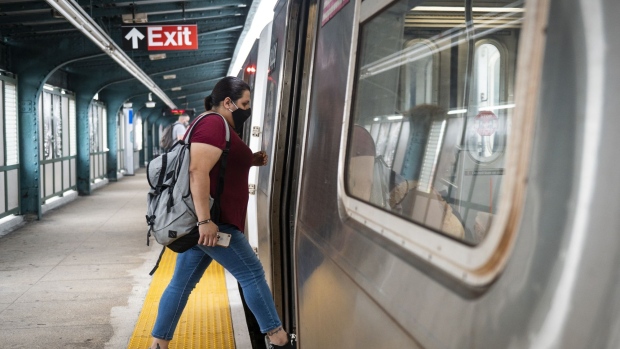Jan 28, 2022
MTA Finds Platform Doors Won’t Fit in Most NYC Subway Stations
, Bloomberg News

(Bloomberg) -- New York City transit officials seeking a speedy solution to boost rider confidence are encountering a problem: Platform doors would fit in fewer than 30% of stations.
The Metropolitan Transportation Authority, which operates the nation’s largest transit system, has faced growing calls to install platform doors following the death this month of Michelle Go, who was pushed onto the subway tracks at the Times Square station.
But such a step, which has been deployed in other major transit systems around the world, would be feasible in only 128 of the 472 subway stations, according to a 2019 report that the MTA released Thursday. And because of challenges related to aligning train doors and the platform gates, the barriers could only be implemented at 41 stations right now.
“We have a crisis of rider confidence brought on by the conditions on mass transit system and also by that very prominent and horrible subway-pushing episode at Times Square,” MTA Chair and CEO Janno Lieber said Wednesday after the agency’s monthly board meeting. “We are looking for action now.”
Combating the perception that the subway is plagued by crime is crucial to restoring ridership, which has been less than 50% of prepandemic levels on recent weekdays. Boosting fare revenue is key as the MTA faces deficits in coming years when federal coronavirus aid runs out.
The MTA has considered installing platform doors before and is looking at the report again, given the increased safety concerns, according to Lieber.
An MTA task force plans to update the agency’s board next month on technology options such as sensors and platform doors, Lieber said Wednesday.
N.Y. MTA Looking at Ways to Stop People From Falling on Tracks
There are other challenges for adding platform doors, including platform width, requirements related to the Americans with Disabilities Act, air-flow dynamics, the availability of power to accommodate the additional electrical load, and multiple car classes with varying door-opening positions, according to the report.
Depending on the height of the gates, the cost of the project could reach around $7 billion for the 128 stations in which they’re feasible, based in part on designs used by systems including in London, Paris, and Hong Kong, according to the report.
©2022 Bloomberg L.P.